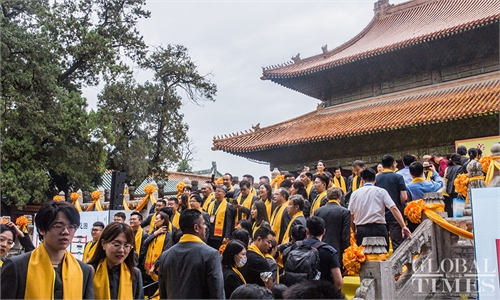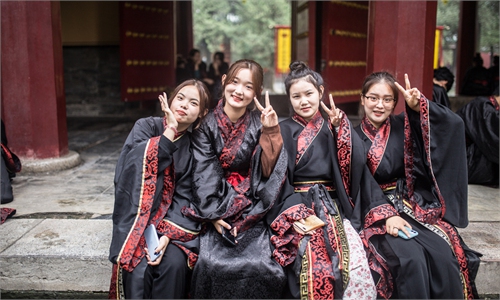IN-DEPTH / IN-DEPTH
Referred in Russia-Ukraine conflict, 'The Art of War' teaches not military tactics, but peace and harmony
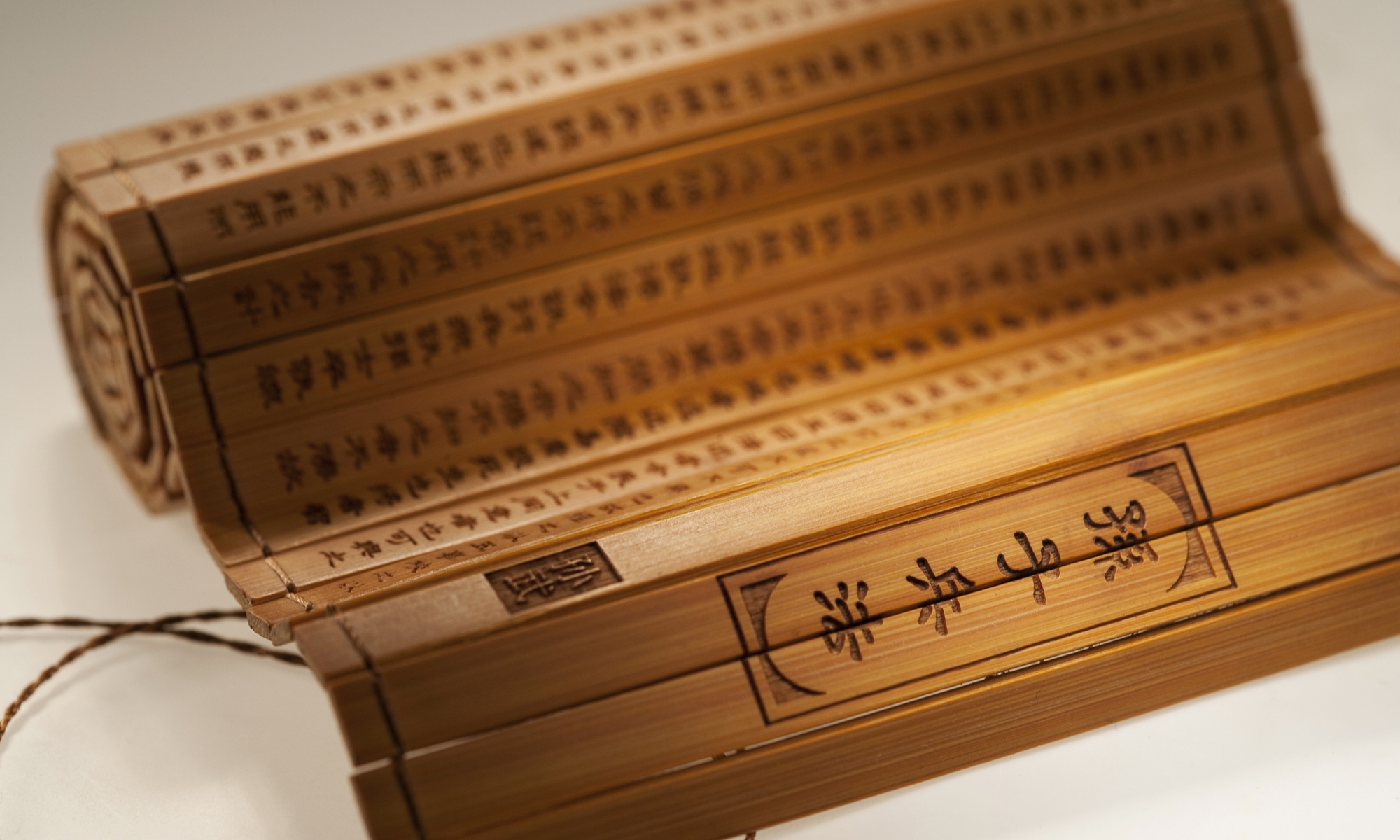
The Art of War bamboo slips. Photo:VCG
A photo showing a cover of China's ancient military treatise The Art of War spotted at a steel factory in Ukraine went viral online. It was initially reported that the book was left by the Ukrainian army in Azov Steel Plant in Mariupol after being blockaded in for 82 days, which soon became a hot topic as many netizens opined that with The Art of War, it's no wonder that the Ukrainian army can defend for such a long period of time.Meanwhile, it was turned out later that the book was found at a steel factory near the Azov Steel Plant. The book, which has been translated into Ukrainian, was no doubt read by its Ukrainian owner in the emergency.
This is not the first time that The Art of War, an ancient Chinese military treatise written by Sun Tzu, has appeared in the ongoing Russia-Ukraine conflict. Dmitry Medvedev, the deputy chairman of Russia's Security Council and former president, quoted The Art of War one month ago to explain the significance of Russia's special military operation in Ukraine. "Sun Tzu said a long time ago: The law of warfare is not to hope that the enemy will not fight, but to rely on what you can use to deal with the enemy; I hope that the enemy will not attack, but rely on yourself to make it impossible for the enemy to attack," said Medvedev.
Why does a military book dating back almost 2,500 years have such a lasting effect on conflict which is now the world's main focus? Besides those involved in warfare, the book has also influenced leaders all over the world such as former US president Richard Nixon and pioneers in many other areas, including business.
Several experts that the Global Times interviews said the book is a treasure to the world. Rather than focusing on specific warfare technology, The Art of War talks about strategy and provides tactical wisdom which still holds true today.
Song Zhongping, a Chinese military expert and TV commentator, said that it is not only the Ukrainian army but other armies including the US Army that have also learned from The Art of War.
"The Art of War talks about how to lead a battle, how to avoid making mistakes, how to achieve victory through making use of a series of factors such as the timing, geographical location, and so on, and how to use the few to defeat the many among others. These tactics and strategies are never out of fashion," Song said.
Experts noted that the essence of The Art of War is not about going to war, but about harmony and peace that other countries should understand and strive for.
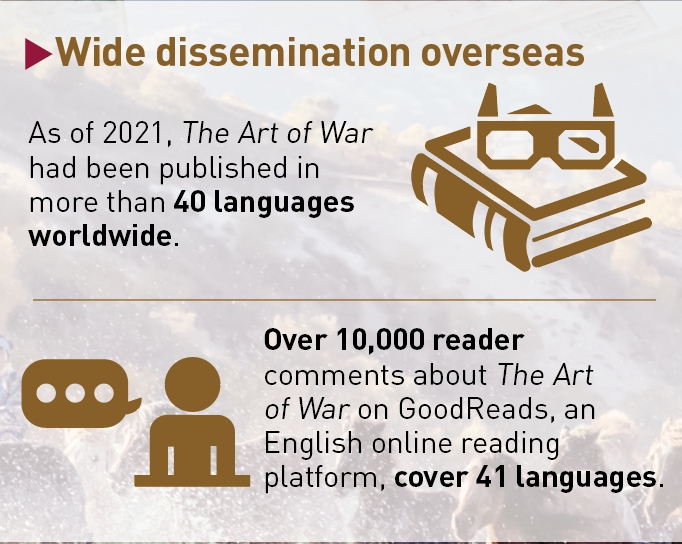
Graphic:GT
A treasure for the world
An Asian military officer surname Choi, who graduated from the Army Command College of the Chinese People's Liberation Army, one of China's most esteemed military academies in East China's Jiangsu Province, told the Global Times on Tuesday that he had read the translated version of The Art of War several times.
"The Art of War is very famous in our country, and there are multiple translations. Many problems can be solved under the principles laid out by Sun Tzu. It's one of the most popular books in the military, business and the management departments," he said.
The 6,000-word book consists of 13 chapters which span from laying down plans, waging a war, to attacking by fire and the use of spies. Compared with other military treatises, the book is highly concise in content therein while, at the same time, conveying precepts of deep philosophy.
Sun Tzu not only conveys excellent military tactical wisdom, but also provides good experience and wisdom in organizational management systems, interpersonal relationships, leadership and in other areas, Choi said.
"In current global relations, for instance, deterrence is very important in defending security. A country needs three key factors to gain advantages in deterrence: Strong capability, good credibility and efficient communication. That is what Sun Tzu said in The Art of War - to subdue the enemy without fighting," he said.
Choi is one of the many foreign military officers who like to read and practice the teachings of The Art of War.
When the Global Times reporter visited the Army Command College which has trained military officers from more than 118 countries, almost every overseas officer had a copy of the English version of The Art of War. Some revealed the dense notes contained in their copies.
Yogeshwar Romkhami, a former senior superintendent of the Nepal Police Service, told the Global Times on Wednesday that this book is one of the subjects taught by many military colleges around the world.
"In recent days, I have witnessed that many politicians and people in academia in India quoting the contents of the book. This is the most famous book with regard to military strategy," he said.
"Life is itself a battle. Specifically in a country like Nepal, where the struggle is everywhere, this could be very useful. Since I was a police officer, the challenges were everywhere. This book was helpful and broadened my views regarding how to maintain calm during challenges and adverse situations," Romkhami told the Global Times.
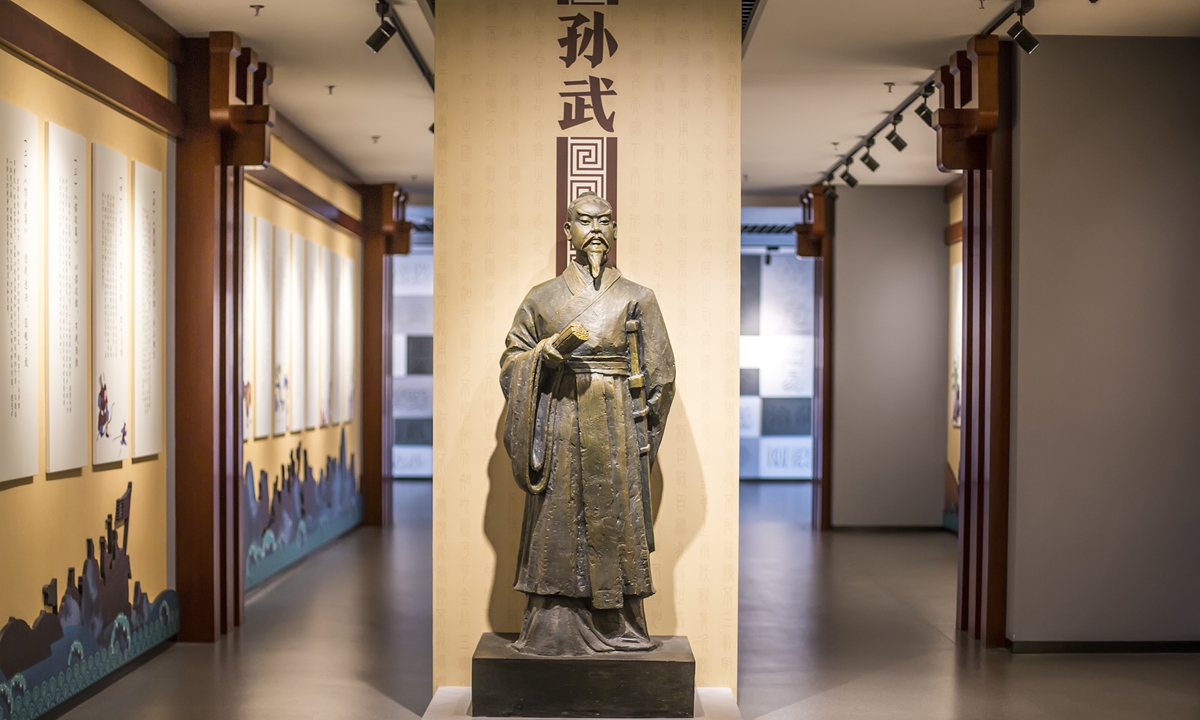
A statue of Sun Tzu at Binzhou Museum in Shandong Province. Photo: VCG
Song said that among the top 10 military treatise, The Art of War should be in the first place. In fact, these treatises all have a great connection to The Art of War as they reference it.Therefore, this book is indeed a rare treasure not only to Chinese people, but also for people from other countries, especially militarists. "It can be regarded as a wonderful book that changed military history," Song said.
Peace-loving at core
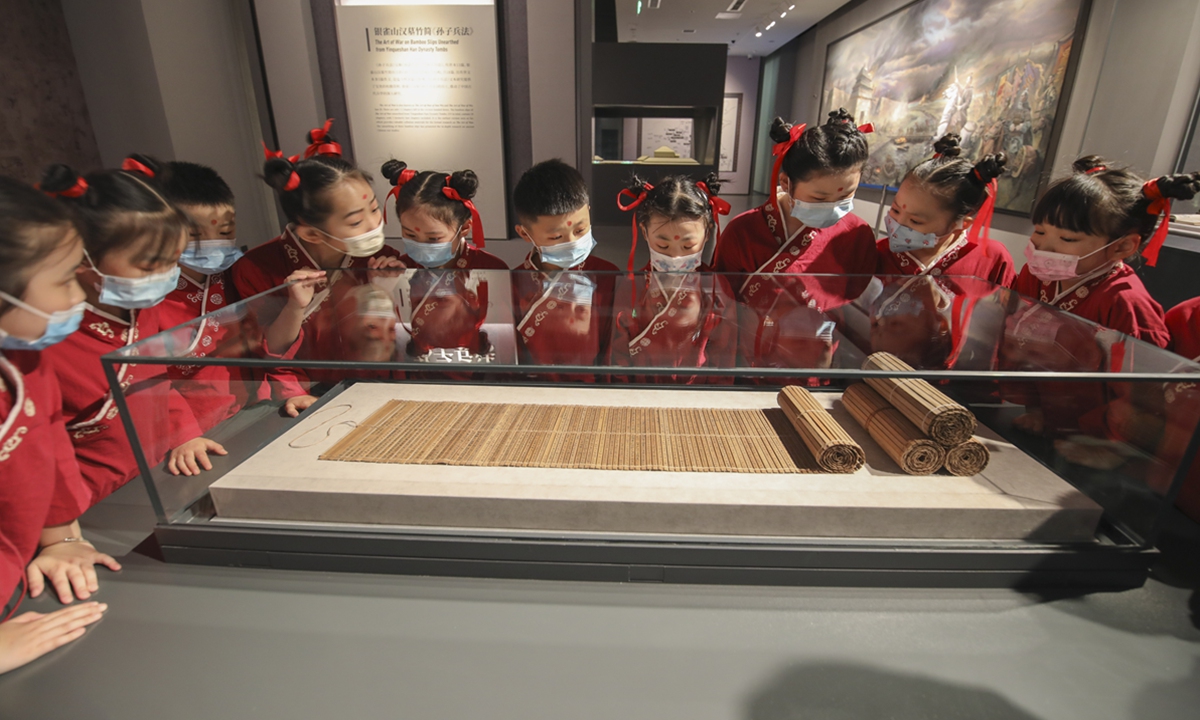
Primary school students look at bamboo slips inscribed with The Art of War at Yinqueshan bamboo slips museum, in Linyi, East China's Shandong Province, on May 18, 2022. Photo: VCG
The supreme art of war is to subdue the enemy without fighting, which embodies China's philosophy of loving peace, reads The Art of War.Major Milan Thapa from Nepal once told the Global Times that he believes that the core of The Art of War is to "stop the war" by "understanding the war." In his view, the treatise promotes "defense-oriented tactics," instead of an "invasion."
From The Art of War, many foreigners have come to understand the concepts of peace and harmony advocated for in Chinese culture.
"When I was in my country, I just had a Western vision of China. We don't have that many Chinese books in our libraries, but more Western authors talking about China. They describe China as a kind of country you must fear, a kind of empire that will invade us when it gets money and power," Etoua Julien Fredy, a deputy military attaché at the Cameroonian Eembassy in China, told the Global Times in a previous interview.
"But when I came to China, it was really different compared to that. Chinese people are loving and they love sharing. That's my honest experience in the field. That is very different from what I read in books. Yes, very different," he stressed.
"Our military doctrine is more influenced by Western thinkers, and it can help come back with the Chinese philosophy of war," he said.
China's philosophy and wisdom
This month, a short video showing a Chinese schoolgirl analyzing the Russia-Ukraine crisis with reference to Romance of the Three Kingdoms, a Chinese classic, went viral.
The girl compared NATO to Cao Cao, an unscrupulous warlord in the novel. Ukraine is like ancient Jingzhou that Cao has occupied which leaves no buffer between him and another warlord named Sun Quan. This eventually leads to a battle at the end of the Han Dynasty and Cao loses the battle.
This video even attracted attention from the Philippine Foreign Secretary Teddy Locsin Jnr. He was so impressed by it that he tweeted it. He was reported to have even thought of sending his granddaughter to study in China.
Analysts said these ancient classics consist of Chinese wisdom and philosophy which still have referential significance for contemporary society. For example, The Art of War teaches one to have a reverence for war, not go for an "invasion."
Prem Sagar, president of Kathmandu-based Nepal-China Mutual Cooperation Society, told the Global Times that what he took away from The Art of War are three lessons. The first is only to enter battles you know you can win; second is to do everything you can, and third is to plan secretly.
"I am so inspired by this book. It is amazing. It gives me life lessons. I have learnt how to manage all things through this book. Now I have to be able to say, yes I can do everything," he told the Global Times.
Analysts said that these books which embody Chinese philosophy shared universal values. The core of them is benevolence, peace-loving, harmony, and a win-win attitude which the Chinese nation advocates for. These values are in the DNA of Chinese people and people in other countries should not be blinded by false and misleading reports from those vicious forces.

Graphic:GT

